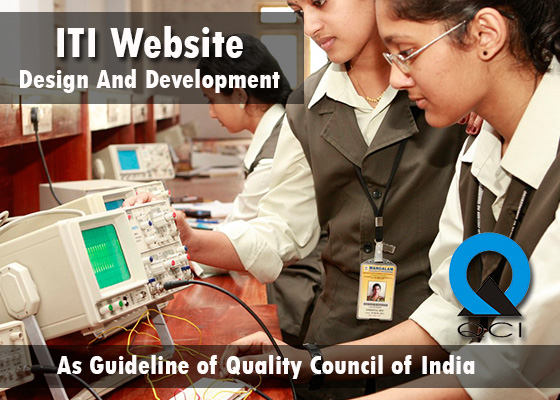MEVE-001: Environmental Impact Assessment for Environmental Health By Prof. B. Rupini & Dr. Sushmitha Baskar
The MEVE-001 deals with Environmental Impact Assessment (EIA) for Environmental Health. This course comprehended the various steps involved for various developmental activities in EIA. Environmental Impact assessment is an essential part of every developmental and industrial activity with an objective to ensure the developmental activities should not have any adverse effects. To achieve this objective, it is important to ensure the quality of EIA is of high order in order to assess the future adverse implications and adopt mitigation measures. This course comprises of four blocks describing EIA in detail. Environmental Impact Assessment (EIA) can be defined as the systematic identification and evaluation of the potential impacts of proposed projects, plans, programs or legislative actions relative to the physical, chemical, biological, cultural and socio-economic components of the total environment. Environment in EIA context mainly focuses physical, chemical, biological, geological, social, economic, and aesthetic dimensions along with their complex interactions, which affects individuals, communities and ultimately determines their forms, character, relationship, and survival. Air Pollution can cause significant effects on environment and subsequently on human, animals, vegetation and minerals. It primarily affects the respiratory, Circulatory olfactory systems in human. In most cases air pollution aggravates preexisting diseases or degrades health status making people more susceptible to other infections or development of chronic respiratory and cardiovascular diseases. The sustainable development of water resources is a multi-dimensional way of thinking about the connections or interdependencies among natural, social, and economic systems in the use of water. The purpose of environmental impact assessment is to guarantee a sustainable development that is in harmony with human welfare and the conservation of ecosystems and hence it should be clearly understood by all concerned. This course provides an understanding of environmental impact assessment of water resources development; to assess the major challenges to sustainable environmental systems from water resources development perspectives, and to identify major environmental issues that need to be considered in sustainable water resources planning and development.
Course layout
Week-1: Basic Concepts of EIA
Week-2: Environmental Appraisal
Week-3: Measurement of EIA
Week-4: Comprehensive Environmental Impact Studies
Week-5: Air Quality Impact Analysis&Water Quality Impact Analysis
Week-6: Socio-economic Impact Analysis
Week-7: Noise Impact Analysis
Week-8: Energy Impact Analysis & Vegetation and Wildlife Impact Analysis
Week-9: Environmental Siting
Week-10: Impact Assessment Methods
Week-11: Life Cycle Assessment
Week-12: Regulations in India
Books and references
• Kulkarni V. S., Kaul, S. N., Trivedi R. K., (2001) Handbook of EIA, Scientific Publishers, India.
• KulkarniVand RamachandraTV, 2009. Environmental Management, TERI Press, New Delhi
• Ahmad, Y. J. and Swamy G. K., (1985), Guidelines to Environmental Impact Assessment in Developing Countries, Hodder & Stoughton, London.
• https://www.moes.gov.in/programmes/environmental-impact-assessment-eia
Instructor bio

Prof. B. Rupini & Dr. Sushmitha Baskar
Indira Gandhi National Open University
Prof. B. Rupini, Professor in Environmental Studies, IGNOU, New Delhi, India. She completed B.Ed, M.Sc., and PhD (Chemistry) from Kakatiya University, Warangal, Telangana, PG diploma in Cheminformatics from the University of Jamia Hamdard, New Delhi. PG Diploma in Distance Education from IGNOU, New Delhi. She is the Programme Coordinator for PhD (Environmental Science) (PHDEV), Post Graduate Diploma in Environmental and Occupational Health (PGDEOH) and Masters and in Environmental Science. She is an organic chemist by training who taught in different conventional universities including Delhi University for 26 years and published many research papers/articles including book chapters, in national and international journals and publishers. She has successfully completed three projects funded by UGC, DST-SERB, and DST-INDO PORTUGAL, under University Grants Commission, Ministry of Science and Technology. Her area ofresearch is synthesis and characterization of environmentally benign ionic liquids, biologically active metal complexes and their applications in the synthesis of functionalized chiral amines and Nano anti-malarial and Green Chemistry. She is supervising four PhD scholars. She worked in collaboration with scientists from University of Madeira, Madeira, Portugal for DST-INDO PORTUGAL project. She delivered lectures as keynote speaker and as a resource person on Role of Green Chemistry on Environmental Heath, Role of Green Chemistry in Pharmaceutical Education and Research in various national and international conferences. She has been awarded as ‘Distinguished Scientist’ in 2016 by Centre for Advanced Research and Design, Venus International Foundation, India and Scientist of the year 2017 award by NESA and NESA Fellowship of the Year Award-2020 by NESA, India.

Dr. Sushmitha Baskar is presently working at the School of Interdisciplinary and Transdisciplinary Studies, Indira Gandhi National Open University, New Delhi. She earned her M.Sc (1995) (Gold medalist) and M.Phil in Environmental Science (1997) from the Department of Environmental Sciences, Bharathiar University, Coimbatore, Tamil Nadu. She obtained her Ph.D. in Environmental Science (2002) from the Department of Environmental Science and Engineering, Guru Jambheshwar University of Science and Technology Hisar. She is awarded with various national fellowships: CSIR (SRF), CSIR (RA), CSIR- Pool Scientist (SRA), UGC Dr. DS Kothari post-doctoral fellowship. She is awarded with international fellowships: Swiss Fellowship (2002-04) to work at Swiss Federal Institute of Technology, Zurich, Switzerland, Indo-Norwegian Grant (2008-09) to work at University of Bergen, Norway and Swedish Grant (2009) at Stockholm University, Sweden where she carried out research in the field of Cave geomicrobiology. She has also visited Technical University, Munich, Germany, Czech Republic, Thailand, Malaysia and Indonesia for part of her research training and as an invited speaker in trainings and conferences. She was recently awarded the university Silver medal for “Best researcher 2019 IGNOU” by the Vice President of India, Sh. Venkaiah Naidu. Her interests include Environmental Science, Environmental Microbiology and Geomicrobiology.At IGNOU she is the Programme Coordinator for Ph.D. Environmental Science, PG Diploma in Environmental and Occupational Health and the Course Coordinator for M.Sc. Environmental Science papers in Earth processes, Disaster management and Environment and Society.
Summary
| Course Status : | Upcoming |
| Course Type : | Not Applicable |
| Duration : | 12 weeks |
| Start Date : | 01 Sep 2021 |
| End Date : | |
| Exam Date : | |
| Category : |
|
| Credit Points : | 4 |
| Level : | Certificate |
ITI Student Resume Portal
रिज्यूम पोर्टल का मुख्य उद्देश्य योग्य छात्रों की जानकारी सार्वजनिक पटल पर लाने की है जिससे जिन्हें आवश्यकता हो वह अपने सुविधा अनुसार छात्रों का चयन कर सकते हैं

